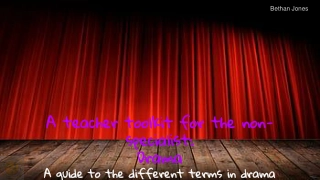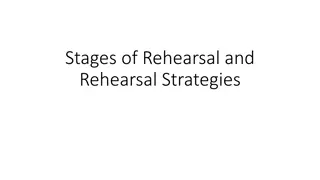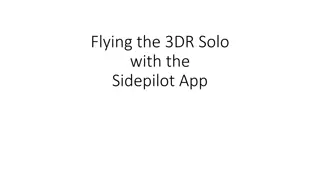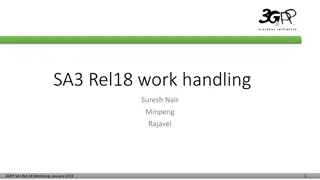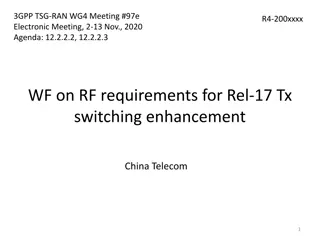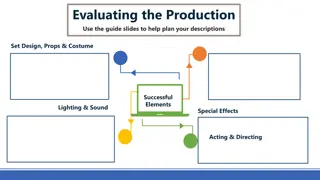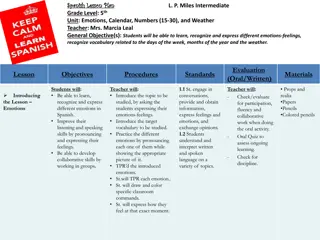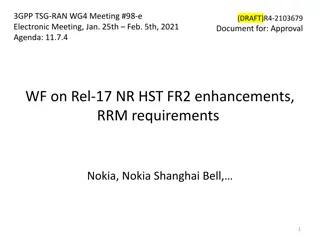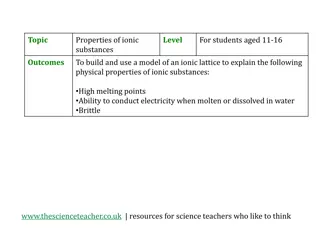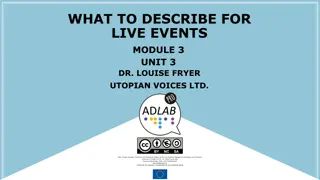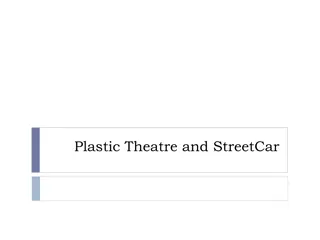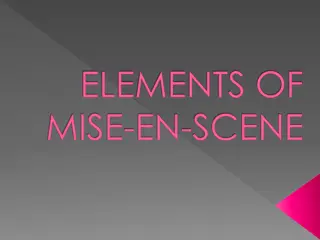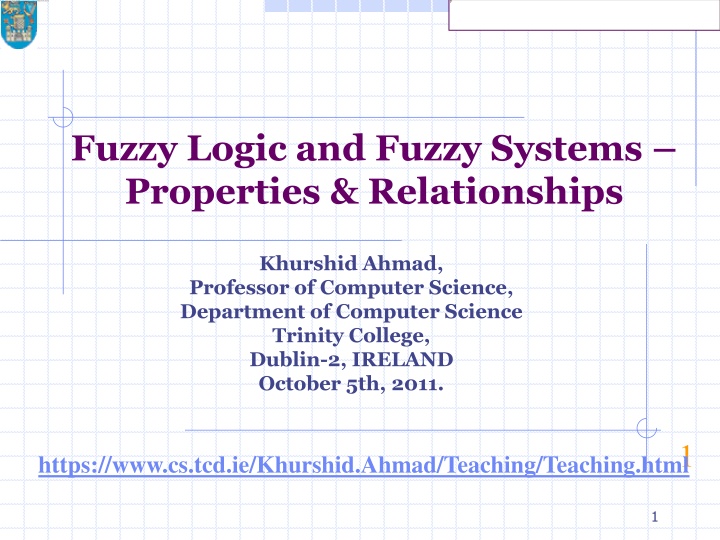
Fuzzy Logic and Systems: Properties & Relationships
Explore the concepts of fuzzy logic and fuzzy systems, including their terminology, background, and definitions. Learn how fuzzy sets extend classical set theory and provide a means to represent imprecise knowledge for decision-making and problem-solving. Discover how fuzzy logic resembles human reasoning and offers formalized tools to address uncertainty and vagueness in various domains.
Uploaded on | 1 Views
Download Presentation

Please find below an Image/Link to download the presentation.
The content on the website is provided AS IS for your information and personal use only. It may not be sold, licensed, or shared on other websites without obtaining consent from the author. If you encounter any issues during the download, it is possible that the publisher has removed the file from their server.
You are allowed to download the files provided on this website for personal or commercial use, subject to the condition that they are used lawfully. All files are the property of their respective owners.
The content on the website is provided AS IS for your information and personal use only. It may not be sold, licensed, or shared on other websites without obtaining consent from the author.
E N D
Presentation Transcript
Fuzzy Logic and Fuzzy Systems Properties & Relationships Khurshid Ahmad, Professor of Computer Science, Department of Computer Science Trinity College, Dublin-2, IRELAND October 5th, 2011. 1 https://www.cs.tcd.ie/Khurshid.Ahmad/Teaching/Teaching.html 1
FUZZY LOGIC & FUZZY SYSTEMS Terminology Fuzzy sets are sets whose elements have degrees of membership of the sets. Fuzzy sets are an extension of the classical set. Membership of a set governed by classical set theory is described according to a bivalent condition all members of the set definitely belong to the set whilst all non-members do not belong to the classical set. Sets governed by the rules of classical set theory are referred to as crisp sets. 2
FUZZY LOGIC & FUZZY SYSTEMS Terminology Fuzzy sets are sets whose elements have degrees of membership of the sets. Fuzzy sets are an extension of the classical set. Membership of a set governed by classical set theory is described according to a bivalent condition all members of the set definitely belong to the set whilst all non-members do not belong to the classical set. Sets governed by the rules of classical set theory are referred to as crisp sets. 3
FUZZY LOGIC & FUZZY SYSTEMS BACKGROUND & DEFINITIONS The concept of a set and set theory are powerful concepts in mathematics. However, the principal notion underlying set theory, that an element can (exclusively) either belong to set or not belong to a set, makes it well nigh impossible to represent much of human discourse. How is one to represent notions like: large profit high pressure tall man wealthy woman moderate temperature. Ordinary set-theoretic representations will require the maintenance of a crisp differentiation in a very artificial manner: high, high to some extent, not quite high, very high etc. 4
FUZZY LOGIC & FUZZY SYSTEMS BACKGROUND & DEFINITIONS Many decision-making and problem-solving tasks are too complex to be understood quantitatively, however, people succeed by using knowledge that is imprecise rather than precise. Fuzzy set theory, originally introduced by Lotfi Zadeh in the 1960's, resembles human reasoning in its use of approximate information and uncertainty to generate decisions. It was specifically designed to mathematically represent uncertainty and vagueness and provide formalized tools for dealing with the imprecision intrinsic to many problems. By contrast, traditional computing demands precision down to each bit. Since knowledge can be expressed in a more natural by using fuzzy sets, many engineering and decision problems can be greatly simplified. http://www.emsl.pnl.gov:2080/proj/neuron/fuzzy/what.html 5
FUZZY LOGIC & FUZZY SYSTEMS BACKGROUND & DEFINITIONS Lotfi Zadeh introduced the theory of fuzzy sets: A fuzzy set is a collection of objects that might belong to the set to a degree, varying from 1 for full belongingness to 0 for full non-belongingness, through all intermediate values Zadeh employed the concept of a membership function assigning to each element a number from the unit interval to indicate the intensity of belongingness. Zadeh further defined basic operations on fuzzy sets as essentially extensions of their conventional ('ordinary') counterparts. Lotdfi Zadeh, Professor in the Graduate School, Computer Science Division Department of Elec. Eng. and Comp Sciences, University of California Berkeley, CA 94720 -1776 Director, Berkeley Initiative in Soft Computing (BISC) http://www.cs.berkeley.edu/People/Faculty/Homepages/zadeh.html In 1995, Dr. Zadeh was awarded the IEEE Medal of Honor "For pioneering development of fuzzy logic and its many diverse applications." In 2001, he received the American Computer Machinery s 2000 Allen Newell Award for seminal contributions to AI through his development of fuzzy logic. 6
FUZZY LOGIC & FUZZY SYSTEMS BACKGROUND & DEFINITIONS A fuzzy set is a class of objects with a continuum of grades of membership. Such a set is characterized by a membership (characteristic) function which assigns to each object a grade of membership ranging between zero and one. (Zadeh 1965:338) The notions of inclusion, union, intersection, complement, relation, convexity, [..] can be extended to such sets, and various properties of these notions in the context of fuzzy sets [..] [have been] established. (ibid). 7 Lotfi Zadeh (1965). Fuzzy Sets . Information and Control. Volume 8, Issue 3, June 1965, Pages 338-353
FUZZY LOGIC & FUZZY SYSTEMS BACKGROUND & DEFINITIONS The notion of an event and its probability constitute the most basic concepts of probability theory. [ ] An event [typically] is a precisely specified collection of points in the sample space. (Zadeh 1968:421). Consider some everyday events and occurrences: It is a cold day; My computer is approximately 5KG in weight; In 20 tosses of a coin there are several more heads than tails In everyday contexts an event is a fuzzy rather than a sharply defined collection of points . Using the concept of a fuzzy set, the notions of an event and its probability can be extended in a natural fashion to fuzzy events of the type [described above] (ibid) 8 Lotfi Zadeh (1968). Probability Measures of Fuzzy Sets . J. Mathematical Analysis & Applications Volume 23, Issue 2, August 1968, Pages 421-427
FUZZY LOGIC & FUZZY SYSTEMS BACKGROUND & DEFINITIONS In sharp contrast to the idealized world of mathematics, our perception of the real world is pervaded by concepts which do not have sharply defined boundaries, e.g., tall, fat, many, most, slowly, old. familiar, relevant, much larger than, kind, etc. A key assumption in fuzzy logic is that the denotations of such concepts are fuzzy sets, that is, classes of objects in which the transition from membership to non-membership is gradual rather than abrupt. (Zadeh 1990:99). 9 Lotfi Zadeh (1990). Probability Measures of Fuzzy Sets . International Journal of General Systems. Vol. 17, pp. 95-105
FUZZY LOGIC & FUZZY SYSTEMS BACKGROUND & DEFINITIONS System Variable Relationships Simple Complex Quantitative, e.g. numerical Conditional and Relational Statements between domain objects A, B: IF A THEN B; A is-a-part-of B A weighs 5KG Conditional and Relational Statements between domain objects A, B: IF A ( A) THEN B ( B) A weighs about 5KG Ordered sequences of instructions comprising A=5; IF A < 5 THEN B=A+5 Ordered sequences of instructions comprising A IS-SMALL; IF A IS_SMALL THEN B IS_LARGE Conventional Quantitative (e.g. numerical) and linguistic variables Fuzzy 10 Lotfi Zadeh (1990). Probability Measures of Fuzzy Sets . International Journal of General Systems. Vol. 17, pp. 95-105
FUZZY LOGIC & FUZZY SYSTEMS BACKGROUND & DEFINITIONS A FUZZY SYSTEM can be contrasted with a CONVENTIONAL (CRISP) System in three main ways: 1. A linguistic variable is defined as a variable whose values are sentences in a natural or artificial language. Thus, if tall, not tall, very tall, very very tall, etc. are values of HEIGHT, then HEIGHT is a linguistic variable. Fuzzy conditional statements are expressions of the form IF A THEN B, where A and B have fuzzy meaning, e.g., IF x is small THEN y is large, where small and large are viewed as labels of fuzzy sets. 2. 3. A fuzzy algorithm is an ordered sequence of instructions which may contain fuzzy assignment and conditional statements, e.g., x =very small, IF x is small THEN y is large. The execution of such instructions is governed by the compositional rule of inference and the rule of the preponderant alternative. 11 Lotfi Zadeh (1990). Probability Measures of Fuzzy Sets . International Journal of General Systems. Vol. 17, pp. 95-105
FUZZY LOGIC & FUZZY SYSTEMS BACKGROUND & DEFINITIONS Zadeh also devised the so-called fuzzy logic: This logic was devised model 'human' reasoning processes comprising: e.g. large, beautiful, small e.g. not very true, more or less false e.g. most, almost all, a few e.g. very, more or less. vague predicates: partial truths: linguistic quantifiers: linguistic hedges: 12
FUZZY LOGIC & FUZZY SYSTEMS BACKGROUND & DEFINITIONS The notion of fuzzy restriction is crucial for the fuzzy set theory: A FUZZY RELATION WHICH ACTS AS AN ELASTIC CONSTRAINT ON THE VALUES THAT MAY BE ASSIGNED TO A VARIABLE. Calculus of Fuzzy Restrictions is essentially a body of concepts and techniques for dealing with fuzzy restrictions in a systematic way: to furnish a conceptual basis for approximate reasoning - neither exact nor inexact reasoning.(cf. Calculus of Probabilities and Probability Theory) 13
FUZZY LOGIC & FUZZY SYSTEMS UNCERTAINITY AND ITS TREATMENT Theory of fuzzy sets and fuzzy logic has been applied to problems in a variety of fields: Taxonomy; Topology; Linguistics; Logic; Automata Theory; Game Theory; Pattern Recognition; Medicine; Law; Decision Support; Information Retrieval; And more recently FUZZY Machines have been developed including automatic train control and tunnel digging machinery to washing machines, rice cookers, vacuum cleaners and air conditioners. 14
FUZZY LOGIC & FUZZY SYSTEMS UNCERTAINITY AND ITS TREATMENT Fuzzy set theory has a number of branches: Fuzzy mathematical programming (Fuzzy) Pattern Recognition (Fuzzy) Decision Analysis Fuzzy Arithmetic Fuzzy Topology & Fuzzy Logic 15
FUZZY LOGIC & FUZZY SYSTEMS UNCERTAINITY AND ITS TREATMENT The term fuzzy logic is used in two senses: Narrow sense: Fuzzy logic is a branch of fuzzy set theory, which deals (as logical systems do) with the representation and inference from knowledge. Fuzzy logic, unlike other logical systems, deals with imprecise or uncertain knowledge. In this narrow, and perhaps correct sense, fuzzy logic is just one of the branches of fuzzy set theory. Broad Sense: fuzzy logic synonymously with fuzzy set theory 16
FUZZY LOGIC & FUZZY SYSTEMS Properties Elements of a fuzzy set may belong to the set, may not belong to the set, or may belong to a degree. Membership of a crisp set is described by a bivalent condition; the membership of a fuzzy set is described by a multi- valent condition. 17
FUZZY LOGIC & FUZZY SYSTEMS FUZZY SETS An Example: Consider a set of numbers: X = {1, 2, .. 10}. Johnny s understanding of numbers is limited to 10, when asked he suggested the following. Sitting next to Johnny was a fuzzy logician noting : Large Number 10 9 8 7 6 5, 4, 3, 2, 1 Comment Degree of membership 1 1 0.8 0.5 0.2 0 Surely Surely Quite poss. Maybe In some cases, not usually Definitely Not 18
FUZZY LOGIC & FUZZY SYSTEMS FUZZY SETS An Example: Consider a set of numbers: X = {1, 2, .. 10}. Johnny s understanding of numbers is limited to 10, when asked he suggested the following. Sitting next to Johnny was a fuzzy logician noting : Large Number Comment Degree of membership 10 1 Surely 9 1 Surely 8 0.8 Quite poss. 7 0.5 Maybe 6 0.2 In some cases, not usually 5, 4, 3, 2, 1 0 Definitely Not We can denote Johnny s notion of large number by the fuzzy set A =0/1+0/2+0/3+0/4+0/5+ 0.2/6 + 0.5/7 + 0.8/8 + 1/9 + 1/10 19
FUZZY LOGIC & FUZZY SYSTEMS FUZZY SETS Fuzzy (sub-)sets: Membership Functions For the sake of convenience, usually a fuzzy set is denoted as: A = A(xi)/xi+ . + A(xn)/xn that belongs to a finite universe of discourse: x x A ,......., , { 2 1 ~ n } x X where A(xi)/xi(a singleton) is a pair grade of membership element . 20
FUZZY LOGIC & FUZZY SYSTEMS FUZZY SETS Johnny s large number set membership function can be denoted as: ( ( ) ) Large Number A ( ( ) ) = = 10 A ( ( ) ) = = 9 A ( ( ) ) = = 8 A ( ( ) ) = = 7 A ( ( ) ) = = 6 A ( ( ) ) = = A ( ( ) ) = = A ( ( ) ) = = A ( ( ) ) = = A ( ( ) ) = = 5, 4, 3, 2, 1 21
FUZZY LOGIC & FUZZY SYSTEMS FUZZY SETS Johnny s large number set membership function can be used to define small number set B, where B (.)= NOT ( A (.) ) = 1 - A (.): ( ( ) ) Small Number B( ( ) ) = = 10 B ( ( ) ) = = 9 B ( ( ) ) = = 8 B ( ( ) ) = = 7 B ( ( ) ) = = 6 B ( ( ) ) = = B ( ( ) ) = = B ( ( ) ) = = B ( ( ) ) = = B ( ( ) ) = = 5, 4, 3, 2, 1 22
FUZZY LOGIC & FUZZY SYSTEMS FUZZY SETS Johnny s large number set membership function can be used to define very large number set C, where C (.)= DIL( A (.) ) = A (.)* A (.) and largish number set D, where D (.)= CON( A (.) ) = SQRT( A (.)) Very Large ( C (.)) Largish ( D (.)) Number 10 9 8 7 6 5, 4, 3, 2, 1 1 1 1 1 0.64 0.25 0.04 0.89 0.707 0.447 0 0 23
FUZZY LOGIC & FUZZY SYSTEMS FUZZY SETS Fuzzy (sub-)sets: Membership Functions Let X = { x } be a universe of discourse i.e., a set of all possible, e.g., feasible or relevant, elements with regard to a fuzzy (vague) concept (property). Then A X (A of X) denotes a fuzzy subset, or loosely fuzzy set, a set of ordered pairs {(x, A(x))} where X x. A : X [0, 1] the membership function of A A(x) [0, 1] is grade of membership of x in A ~ 24
FUZZY LOGIC & FUZZY SYSTEMS FUZZY SETS Fuzzy (sub-)sets: Membership Functions A(x) A(x) Many authors denote the membership grade A(x) by A(x). A FUZZY SET IS OFTEN DENOTED BY ITS MEMBERSHIP FUNCTION If [0, 1] is replaced by {0, 1}:This definition coincides with the characteristic function based on the definition of an ordinary, i.e., non-fuzzy set. 25
FUZZY LOGIC & FUZZY SYSTEMS FUZZY SETS Like their ordinary counterparts, fuzzy sets have well defined properties and there are a set of operations that can be performed on the fuzzy sets. These properties and operations are the basis on which the fuzzy sets are used to deal with uncertainty on the hand and to represent knowledge on the other. 26
FUZZY LOGIC & FUZZY SYSTEMS FUZZY SETS: PROPERTIES Properties Definition P1 P2 Equality of two fuzzy sets Inclusion of one set into another fuzzy set Cardinality of a fuzzy set P3 P4 P5 An empty fuzzy set -cuts 27
FUZZY LOGIC & FUZZY SYSTEMS FUZZY SETS: PROPERTIES Properties Definition Examples Fuzzy set A is considered equal to a fuzzy set B, IF AND ONLY IF (iff) A (x) = B (x) Inclusion of one set into another fuzzy set A X is included in (is a subset of) another fuzzy set, B X A(x) B(x) x X P1 Consider X = {1, 2, 3} and A = 0.3/1 + 0.5/2 + 1/3; B = 0.5/1 + 0.55/2 + 1/3 Then A is a subset of B P2 28
FUZZY LOGIC & FUZZY SYSTEMS FUZZY SETS: PROPERTIES Properties P3 Definition Cardinality of a non-fuzzy set, Z, is the number of elements in Z. BUT the cardinality of a fuzzy set A, the so-called SIGMA COUNT, is expressed as a SUM of the values of the membership function of A, A(x): + + = A A A x x CARD 2 1 ) ( ) ( n = i + = ( ) ( ) x x A n A i 1 Example: Card A = 1.8 Card B = 2.05 29
FUZZY LOGIC & FUZZY SYSTEMS FUZZY SETS: PROPERTIES Properties Definition Examples A fuzzy set A is empty, IF AND ONLY IF A(x) = 0, x X P4 An -cut or -level set of a fuzzy set A X is an ORDINARY SET A X, such that A ={x X; A(x) }. Decomposition A= A 0 1 A=0.3/1 + 0.5/2 + 1/3 X = {1, 2, 3} A0.5 = {2, 3}, A0.1 = {1, 2, 3}, A1 = {3} P5 30
FUZZY LOGIC & FUZZY SYSTEMS FUZZY SETS: OPERATIONS Operations Definition O1 O2 O3 O4 O5 O6 O7 Complementation Intersection Union Bounded sum Bounded difference Concentration Dilation 31
FUZZY LOGIC & FUZZY SYSTEMS FUZZY SETS: OPERATIONS Definition & Example Operations The complementation of a fuzzy set A X (A of X) A (NOT A of X) ~ A(x) = 1 - A(x) Example: Recall X = {1, 2, 3} and A = 0.3/1 + 0.5/2 + 1/3 A = A = 0.7/1 + 0.5/2. O1 Example: Consider Y = {1, 2, 3, 4} and C Y ~ C = 0.6/1 + 0.8/2 + 1/3; then C = ( C) = 0.4/1 + 0.2/2 + 1/4 C contains one member not in C (i.e., 4) and does not contain one member of C (i.e., 3) 32
FUZZY LOGIC & FUZZY SYSTEMS Properties More formally, Let X be some universe of discourse Let S be a subset of X Then, we define a characteristic function or membership function . 33
FUZZY LOGIC & FUZZY SYSTEMS Properties The membership function associated with S is a mapping : X S } 1 , 0 { Such that for any element x X If S(x)=1, then x is a member of the set S, If S(x)=0, then x is a not a member of the set S 34
FUZZY LOGIC & FUZZY SYSTEMS Properties Remember the curly brackets ({ and }) are used to refer to binary value S : } 1 , 0 { X For fuzzy subset (A) we use square brackets ([ and ]) to indicate the existence of a UNIT INTERVAL : X A ] 1 , 0 [ 35
FUZZY LOGIC & FUZZY SYSTEMS Properties For each x in the universe of discourse X, the function A is associated with the fuzzy subset A. : X A ] 1 , 0 [ A(x) indicates to the degree to which x belongs to the fuzzy subset A. 36
FUZZY LOGIC & FUZZY SYSTEMS Properties A fuzzy subset of X is called normal if there exists at least one element X such that A( )=1. A fuzzy subset that is not normal is called subnormal. All crisp subsets except for the null set are normal. In fuzzy set theory, the concept of nullness essentially generalises to subnormality. The height of a fuzzy subset A is the largest membership grade of an element in A height(A) = max ( A( )) 37
FUZZY LOGIC & FUZZY SYSTEMS Properties Assume A is a fuzzy subset of X; the support of A is the crisp subset of X whose elements all have non-zero membership grades in A: supp(A) = {x A(x) 0 and x X} Assume A is a fuzzy subset of X; the core of A is the crisp subset of X consisting of all elements with membership grade 1: Core(A) = {x A(x) = 1 and x X} 38
FUZZY LOGIC & FUZZY SYSTEMS Properties A normal fuzzy subset has a non-null core while a subnormal fuzzy subset has a null core. Example: Consider two fuzzy subsets of the set X, X = {a, b, c, d, e } referred to as A and B A = {1/a, 0.3/b, 0.2/c 0.8/d, 0/e} and B = {0.6/a, 0.9/b, 0.1/c, 0.3/d, 0.2/e} 39
FUZZY LOGIC & FUZZY SYSTEMS Properties From the properties above we have: Normal/Subnormal? A > Normal fuzzy set (element a has unit membership) B > Subnormal fuzzy set (no element has unit membership) Height: height (A) = 1 e ) (k max k = max k = A a e ) (k height (B) = 0.9 A a 40
FUZZY LOGIC & FUZZY SYSTEMS Properties Support: Supp(A) = {a, b, c, d } (e has zero membership) Supp(B) = {a, b, c, d, e } 41
FUZZY LOGIC & FUZZY SYSTEMS Properties Core: Core(A) = {a} (only unit membership) Core(B) = (no element with unit membership) Cardinality: e = 3 . 0 + 2 . 0 + 8 . 0 + + = (k) 1 0 3 . 2 Card(A) = A = k a Card(B) = 0.9+0.6+0.1+0.3+0.2=2.1 42
FUZZY LOGIC & FUZZY SYSTEMS Operations Operations: The union of fuzzy subsets, A and B, of the set X, is denoted as the fuzzy subset C of X. C = A B such that for each C(x)= max[ A(x), B(x)] = A(x) B(x) X The intersection of the fuzzy subsets A and B is denoted as the fuzzy subset D of X D = A B for each x X D(x) = min [( A(x), B(x)] 43
FUZZY LOGIC & FUZZY SYSTEMS Operations The operations of Max and Min play a fundamental role in fuzzy set theory and are usually computed from the following formulae: + + a b a | | b = ( a, ) b Max 2 + a b a | | b = ( a, ) b Min 2 44
FUZZY LOGIC & FUZZY SYSTEMS Operations Example: Union and Intersection of Fuzzy sets Recall A = {1/a, 0.3/b, 0.2/c, 0.8/d, 0/e} B = {0.6/a, 0.9/b, 0.1/c, 0.3/d, 0.2/e} The union of A and B is C = A B ={1/a, 0.9/b, 0.2/c, 0.8/d, 0.2/e}, maximum of the membership functions for A and B and the intersection of A and B is D = A B ={0.6/a, 0.3/b, 0.1/c, 0.3/d, 0/e} minimum of the membership functions for A and B 45
FUZZY LOGIC & FUZZY SYSTEMS Operations The complement or negation of a fuzzy subset A of X is denoted by X A = A and the membership function of the complement is given as: ) ( x A ( ) x = 1 A THE NEGATION IS THE COMPLEMENT OF A WITH RESPECT TO THE WHOLE SPACE X. EXAMPLE: , / 3 . 0 , / 1 { b a A = = 2 . 0 / , 8 . 0 / , 0 / } A a b c d e { 0 / , 7 . 0 / , 8 . 0 / , 2 . 0 / , 1 / } c d e 46
FUZZY LOGIC & FUZZY SYSTEMS Operations Generally, the intersection of a fuzzy subset and its complement is NOT the NULL SET. = A E ; A EXAMPLE: = ( ) [( ( , ) x ( )] x Min x E A A = { 0 / 3 . 0 , / 2 . 0 , / 2 . 0 , / , 0 / }. E a b c d e The distinction between a fuzzy set and its complement, especially when compared with the distinction between a crisp set and its complement, is not as clear cut. The above example shows that fuzzy subset E, the intersection of A and its complement, still has three members. 47
FUZZY LOGIC & FUZZY SYSTEMS Operations If A is a fuzzy subset of X and is any non-negative number, then A is the fuzzy subset B such that: = ( ( ) ( )) x x B A EXAMPLE: / 1 { A = , 6 . 0 / , 3 . 0 / , 0 / , 5 . 0 / } a b c d e 2 / 1 { = , . 0 36 / , . 0 09 / , 0 / , . 0 25 / } A a b c d e 1 / 2 = / 1 { = , . 0 774 / , . 0 548 / , 0 / , . 0 707 / } A A a b c d e 48
FUZZY LOGIC & FUZZY SYSTEMS Operations CONCENTRATION: If > 1 then A A decreases membership DILATION If < 1 then A A increases membership. Note: If A is a crisp subset and >0, then A = A 49
FUZZY LOGIC & FUZZY SYSTEMS Operations Level Set If A is a fuzzy subset of X and Then we can define another fuzzy subset F such that ) ( ; = = 0 1 ( ) F A x x x X F A EXAMPLE: Let =0.5, and Then A = {1/a, 0.3/b, 0.2/c, 0.8/d, 0/e} F = {0.5/a, 0.15/b, 0.1/c, 0.4/d, 0/e} 50

